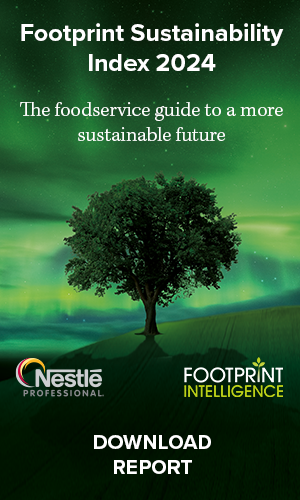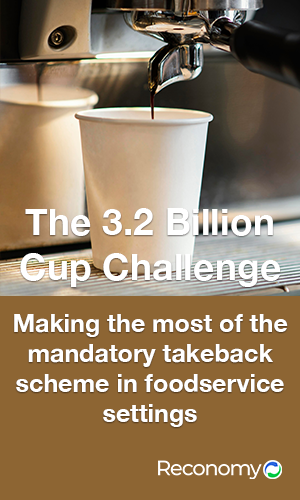A government white paper promises long-term measures to support a food system that offers access to healthy and sustainable food for all. In reality, it does no such thing, says Nick Hughes.
“The UK has a once-in-a-lifetime opportunity to reshape the food system,” said Henry Dimbleby when he published his independent national food strategy last July. As reaction flooded in throughout Monday to the government’s long-awaited response – a food strategy for England – it quickly became clear the opportunity had largely been squandered.
Praise, of which there was some, came largely from bodies like the Food and Drink Federation whose job it is to defend the status quo, including the interests of purveyors of unhealthy and unsustainable products.
Criticism, on the other hand, came from groups that have long called for a transformative strategy that grasps the scale and urgency of the challenges, like obesity and climate breakdown, linked to our current food system. “Feeble”, “toothless”, “watered down” and “unethical” were among the descriptions used by NGOs working on food and sustainably issues (one can only imagine what adjectives were being used privately).
The Soil Association perhaps captured the mood best when it headed its response to the strategy “thin gruel but with some silver linings”. Among those silver linings – and there are undeniably some progressive standalone proposals in the strategy – are plans to strengthen public procurement standards and to create a new data partnership tasked with developing a consistent and defined set of metrics to measure the health, environmental sustainability and animal welfare impacts of food.
Both measures were proposed in Dimbleby’s review. However the absence of a Food Bill from the white paper has made campaigners nervous that many proposals will not stick while others will lack impact without proper delivery and enforcement mechanisms.
Short and not sweet
Dimbleby’s own plan stretched to 164 pages (plus appendices and supplementary reports). At a mere 33 pages, the government’s own strategy is five times shorter. Dare one suggest that the sophistication of the analysis is similarly in proportion?
In his foreword, environment secretary George Eustice writes that “through this strategy, we are setting out long-term measures to support a food system that offers access to healthy and sustainable food for all”. In reality, it does no such thing.
That’s not to say its subject matter is narrow. The strategy covers a board spectrum of food and farming issues but it does so superficially by offering piecemeal, mostly vague solutions and never comes close to articulating – as Dimbleby did so artfully – how apparently unrelated problems like the ‘junk food cycle’ and the ‘invisibility of nature’ (terms coined by Dimbleby and acknowledged here by the government) are in fact common symptoms of the same ailing food system. In short, it never takes a systems view.
Indeed, the authors demonstrate some remarkable chutzpah in stating that although the themes of the strategy broadly overlap with Dimbleby’s review “we have gone further in places”, while studiously ignoring the many areas in which the strategy falls short.
Arguably Dimbleby’s most radical proposal, for a sugar and salt reformulation tax, has been rejected as was widely expected given the cost of living crisis. But other recommendations have also been passed over. There is still no commitment to introduce core environmental standards for food imports, while calls for the government to extend the earnings threshold for free school meals continue to be rejected.
The strategy fails to grapple with the contentious question of meat consumption, which Dimbleby’s independent review addressed head on. Recommendations both by Dimbleby and the Climate Change Committee to reduce meat consumption by around 30% are ignored; instead the document talks only of the alternative protein sector providing “another opportunity for growth, complementing traditional livestock sectors”, and of plans to launch a call for evidence on the use of feed additives to reduce methane emissions from livestock. This is symptomatic of a strategy that prioritises technical fixes like feed innovation or gene editing over systems or behaviour change.
And for a document delayed on account of the war in Ukraine and subsequent food price crisis it has remarkably little to say about the vulnerability of food supplies to geopolitical crises, nor how the government might help alleviate some of the pain felt by low-income households by improving affordability and access to food. On the contrary, the strategy is characterised by complacency. It refers on more than one occasion to the resilience of the industry (commendable as it was) in dealing with the coronavirus pandemic – as if the same businesses are guaranteed to respond in kind to all future crises be they economic, social or environmental.
Concrete commitments
Among the more concrete commitments is one to publish a land use framework in 2023 to ensure the government meets its net-zero and biodiversity targets, and another to support seafood science and innovation. There is a plan to draw up a new horticulture strategy for England, while short term labour challenges will be eased by the provision of an additional 10,000 visas for seasonal agricultural workers.
The government has also pledged to look at how to improve food waste reporting; a new consultation will consider whether to enhance existing voluntary agreements or mandate food waste measurement and reporting for large businesses.
That is arguably one of the most significant proposals of relevance to the foodservice sector. Another is the launch of a “food data transparency partnership” with the aim of “providing people with the information they need to make more sustainable, ethical, and healthier food choices, and incentivise industry to produce healthier and more ethical and sustainable food”.
By the end of 2023 in England, the government says it will have streamlined industry reporting requirements relating to the production and sale of food and drink. It plans as well to consult on implementing mandatory public reporting for large companies across the retail, manufacturing and foodservice sectors against a set of health metrics and explore a similar approach to sustainability and animal welfare.
Significantly, it also pledges to develop a mandatory methodology that must be used by those who want to produce eco-labels or make claims about the sustainability of their products in order to prevent greenwashing.
On public procurement, a consultation has been launched on whether to make all public sector organisations in England adhere to buying standards for food and catering services rather than just central government departments, their agencies and non-departmental government bodies including the NHS and armed forces. It also proposes an ambition that 50% of public sector food expenditure goes on food produced locally or to higher environmental production standards, albeit with the caveat that buyers “maintain value for money for taxpayers”.
Disjointed thinking
Taken as a whole the package of measures has to constitute some progress. It is positive too that food and farming policy is linked explicitly to the government’s net-zero target on several occasions given that last year’s net-zero strategy downplayed the role of food.
But there is a nagging question that overhangs the whole document: where is the joined-up thinking the government rightly identifies as necessary “to collectively drive progress”? Early on, it is stated that the strategy is “not a comprehensive summary of everything that government is doing to improve our food system”, to which the question must surely be ‘why not?’
On obesity policy, the strategy has little to say besides pointing to the forthcoming publication of the Department of Health and Social Care’s health disparities white paper. Other Dimbleby recommendations – notably around school food – were funnelled into the recent levelling up white paper published by the Department for Levelling Up, Housing and Communities.
That it is Defra’s name on the front cover of this particular strategy – a department that has historically lacked serious clout in Whitehall – should set alarm bells ringing among anyone who believes food should be at the very top of the government’s agenda.
Seminal strategy documents of the past like Food Matters have carried the Cabinet Office’s name, indicating the buy-in of those who hold the real levers of power. Lest we forget that Dimbleby’s plan was commissioned under a former prime minister, Theresa May, by a former environment secretary, Michael Gove.
The food strategy has long felt like a document no one in government wanted to create, in response to an independent review no one wanted to be produced. Sadly, there is little in Monday’s strategy to dispel that dismal impression.














